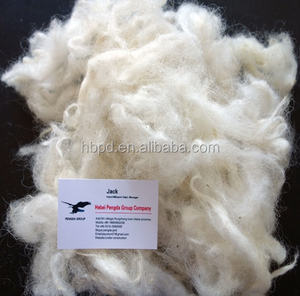How is cashmere Fibre Made and Why Is It So In Demand?
How is cashmere Fibre Made and Why Is It So In Demand?
Blog Article
The Relevance of Cashmere a Natural Fiber: An Overview to Lasting Fashion Options
Amongst these, cashmere, an all-natural fiber sourced from Kashmir goats, stands out for its green manufacturing procedure, longevity, and classic allure. As customers, the decision to opt for cashmere garments can lead to a significant decrease in style's environmental effect while adding unmatched convenience and style to one's wardrobe.

Recognizing Cashmere: a Closer Check Out Its Origins
Prized for its lavish soft qualities and warmth, cashmere represents the embodiment of refined convenience worldwide of materials. It originates from the crude, fluffy undercoat of the Kashmir goat, primarily discovered in rough environments of Mongolia, China, and India. Strikingly, each goat returns simple 150 grams of the precious fiber each year, after a tough process of brushing and sorting. This explains the high worth cashmere commands on the market. Its deficiency, combined with the extensive labor required for its manufacturing, adds to its exclusivity. The all-natural insulation residential properties of cashmere also make it a favorite for winter season style. Regardless of its delicate look, cashmere is remarkably sturdy, providing the excellent blend of high-end and longevity.
The Sustainable Production Refine of Cashmere
While the deluxe and appeal of cashmere are indisputable, the techniques of its manufacturing also hold significant value. The lasting manufacturing of cashmere involves a eco-friendly and precise process. The fibers are gathered each derive from goats in Mongolia and China without creating injury to the pets. Each goat generates just a couple of ounces of the precious fiber, ensuring its rarity and value. The fibers are then arranged by hand, cleansed, and rotated right into thread, a procedure that calls for minimal machinery and contributes to local economies. This careful, ethical process reduces environmental impact and advertises the long life of the cashmere-producing goat populaces. Picking cashmere is not just a style declaration, yet additionally a mindful option for sustainable living.
Cashmere and Longevity: A Resilient Fashion Financial Investment
In enhancement to its sustainable production procedure, cashmere's sustaining resilience makes it a deserving style financial investment. While initial expenses might be greater, the long life of cashmere items makes them cost-effective in the long run. Spending in cashmere is not just a official source lasting selection yet also a commitment to resilient, resilient style.
The Eco-Friendly Conveniences of Finding Cashmere
Have you Resources ever considered the environment-friendly advantages of selecting cashmere? Cashmere, an all-natural fiber, is biodegradable and sustainable, making it an eco pleasant option in vogue. Its manufacturing procedure, unlike synthetic fibers, doesn't count on petroleum-based products or give off dangerous greenhouse gases. Cashmere goats help to maintain biodiversity by grazing on plants various other animals neglect. Significantly, cashmere needs less water for its manufacturing contrasted to cotton, therefore conserving one of our world's most precious sources. It's crucial to resource cashmere sustainably to alleviate overgrazing problems. To conclude, picking cashmere not just provides elegant convenience and heat however also adds to a much more sustainable apparel navigate to this website industry.
Introducing the Timeless Charm of Cashmere in vogue

Making Responsible Wardrobe Options: Selecting Cashmere
While rapid fashion patterns may tempt with their economical rates and fast turnover, making responsible wardrobe options involves taking into consideration the lasting impacts of one's purchases. Selecting cashmere, a natural and lasting fiber, can considerably decrease one's ecological footprint. Cashmere garments, known for their sturdiness and classic allure, often outlast their synthetic counterparts, reducing waste and offering better value for money. Moreover, cashmere farming adds to maintaining all-natural environments and biodiversity. Investing in cashmere sustains these typical farming techniques, hence strengthening and boosting local economies sustainability. Therefore, choosing this luxurious fiber isn't just a nod to individual style but also an action in the direction of accountable consumption. Making closet options like these can influence the style sector to prioritize sustainability.
Conclusion
Finally, cashmere is a considerable part in the motion in the direction of sustainable style. Its natural beginnings, moral production procedure, and toughness make it an environment-friendly choice. The ageless allure of cashmere ensures its area in fashion for generations to find. By choosing cashmere, consumers are not just buying design and convenience, but likewise sustaining accountable techniques within the apparel industry, adding to a more sustainable future.
Selecting cashmere is not simply a style statement, but likewise a mindful selection for lasting living. (cashmere)

Cashmere, a natural fiber, is eco-friendly and biodegradable, making it an eco friendly selection in fashion. Cashmere, a natural fiber gotten from the fine undercoat of Himalayan goats, supplies exceptional soft qualities and warmth, making it a desirable material in the fashion market.
Report this page